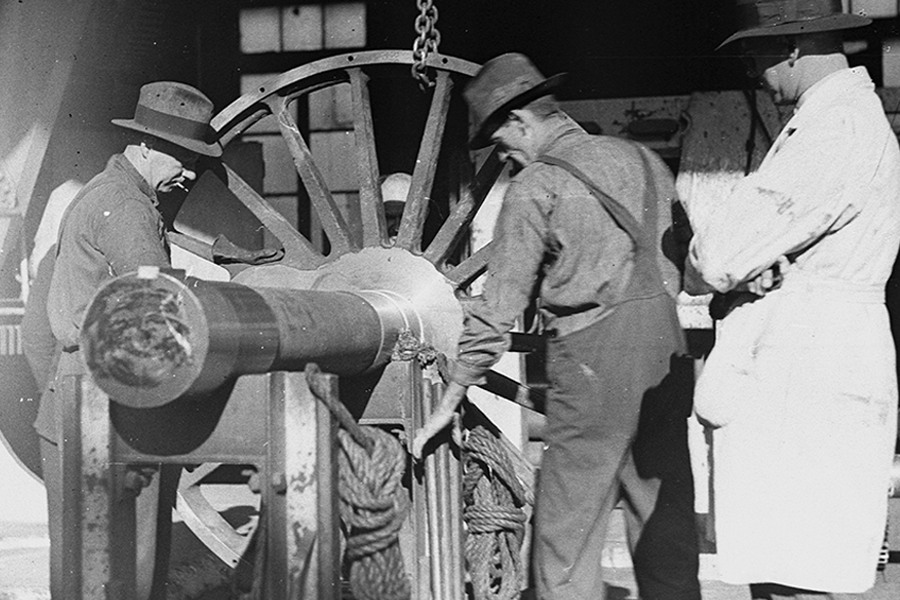Locomotive Workshops
“Row upon row of drab, smoke-grimed buildings, housing a throbbing energy which pulse forth to the accompaniment of the thump, thump, thump, of giant presses, torturing white-hot steel into servitude.” Stan Jones, Daily News, 19 January 1939

Commissioned and built under John Whitton, Chief Engineer of NSW Railways, and opening in 1887, the Eveleigh Locomotive Workshops were responsible for manufacturing, repairing, assembling, and maintaining every element of a locomotive steam engine.
The function of the main Locomotive Workshop building was supported by other workshop buildings—the Engine Running Shed, Large Erecting Shop, and New Locomotive Workshop—as well as a range of ancillary operations carried out in other buildings scattered across the site, including a metal foundry, plumbers, tin and coppersmiths shops, laundry, pattern shop, and first aid station.
To ensure that the Locomotive Workshops building would be able to withstand the intense weights, power and vibrations of the machinery it would house without the foundations and walls crumbling over time, it was critical that the building design included special foundations and architectural form.
The foundations of the Locomotive Workshop building include underground arched brickwork that spans between timber foundation piles and planks. These foundational brickwork arches were designed to effectively function as ‘springs’ beneath the building walls to support the workshop overall weight, as well as to absorb the severe vibrations caused by the powerful hammers and presses.
The fifteen original bays of the Locomotive Workshops building each had specific functions and trades assigned to them, functions that gradually moved and evolved throughout the Workshops’ 100+ years of operation.
Locomotive Workshop bays at opening in 1887:
Bays 1 & 2—Blacksmiths Shop. (Metal forging, mostly iron and steel.)
Bay 3—Boiler Shop. (Repair and construction of steam locomotive boilers.)
Bay 4—Foundry. (Production of metal castings.)
Bays 5 to 8—Erecting Shop. (Dismantled and reassembled locomotive engines.)
Bays 9 to 11—Machine & Fitting Shop. (Machinery to repair, shape and produce components.)
Bay 12—Paint Shop. (Responsible for painting locomotives and components.)
Bay 13—Traverser. (Large moving platform used to move locomotives in and out of Workshop.)
Bay 14—Pattern & Joiners Shop. (Production and storage of foundry patterns.)
Bay 15—Loco Stores. (Supply of components and consumables used in workshops.)
“Amid the roar, crash, and hum hundreds of grimy workmen are within sight at one time. Add also machinery of all sorts and descriptions, from huge to small, fit the picture in a space where a big “T” locomotive is a pigmy, and some impression is gained of the largeness of things at Eveleigh”. Sydney Morning Herald, 26 September 1905
References
1939 'EVELEIGH -- THE HEART OF THE TRANSPORT SYSTEM', Daily News (Sydney, NSW : 1938 - 1940), 19 January, p. 7. , viewed 27 Apr 2021, http://nla.gov.au/nla.news-article236319651
1905 'EVELEIGH WORKSHOPS.', The Sydney Morning Herald (NSW : 1842 - 1954), 26 September, p. 12. , viewed 19 May 2021, http://nla.gov.au/nla.news-article14746243
